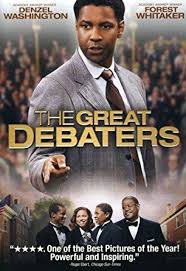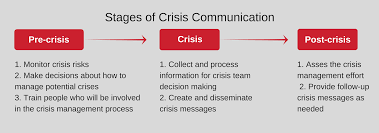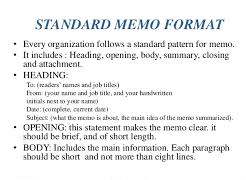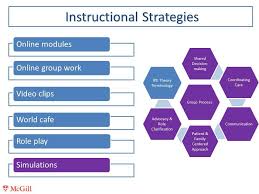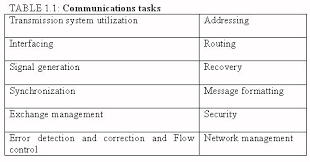
Communications Tasks
TASK DISCUSSION 1:
Quite often, our perceptions influence our judgment of people or events. For example, when we are driving and someone cuts us off, some of us instinctively yell, throw our hands up, and stretch forward to try to see the other driver. We announce loudly that the driver is a mindless idiot and should not be allowed on the road. However, that is merely our perception. Maybe the driver was rushing because her son broke his arm and she was trying to get to the Emergency Room. Having that knowledge would certainly change the way we perceived the driver and his or her actions.
In this assignment we will take a look at the four stages of perception covered in your online readings as they relate to the video “Language in the Office”. In this scenario, you will examine the perspective of one of the four main characters. The character you are assigned is based on the first letter of your last name (unless your instructor assigns you a different character).
John—starts the scenario talking to Regina (last name beginning with A-F) THIS IS THE ONE FOR ME….My last NAME
STARTS WITH B
Regina—working at the desk (last name beginning with G-M)
Brian—another employee (holding the football) (last name beginning with N-S)
Gerald—assistant manager (last name beginning with T-Z)
Watch the video, “Language in the Office” and for your initial post, take on the perspective of your assigned character. (Click here to view the text transcript of the video.) Provide some insight as to why you think your character responded the way he or she did. You will walk through the perception process and create a perception of your character and the scenario. Your initial post should be a minimum of three paragraphs (one for each of the first three stages of perception).
Stage 1: Selection
How do you think your character perceives the scenario? What were the verbal/non-verbal cues that justify your answer? Remember, in the selection phase it is usually the loud or out of the ordinary items that get selected first. As you work through this process, notice what is catching the attention of your character. What is not catching the attention of your character? What type of mood is your character in?
Stage 2: Organization
Now that you have perceived the scenario, you must organize the information of his/her surroundings. Take a look at each of the other characters in the scenario. Based on their looks alone, classify each of the characters. For instance, you might look at a woman in a business suit as being a successful person, or if you see a person driving in a limousine, you would think that they were rich. Assess the other characters based on what you see in the scenario.
Stage 3: Interpretation
Now that you have described your character and done a brief assessment of each of the other characters in the scenario, examine the non-verbal cues that the other members are giving through the video. Based on their tone, communication, and non-verbal cues write a brief description of your perception of each team member.
By the due date assigned, post your initial response to the Discussion Area.
After you have made your initial post, you will conduct the last stage in the perception process in your responses to your classmates. Find a classmate that has posted from the perspective of a different character than yours.
Step 4: Negotiation
Read through the perception process of the other characters. Did your classmate perceive their character the same way that you perceived their character? Did your classmate perceive your character the same way that you did? What were some of your similarities and differences in perception?
Responses to classmates’ posts should be substantive and be at least 150–200 words in length. Your responses should elaborate on your thoughts, bringing in terms and ideas from your text and classroom materials to support your ideas. Please post and respond following the criteria listed below.
Complete your participation for this assignment by the due date assigned.
Guidelines for responding to your classmates’ posts:
Appropriate responses may include:
Asking a follow-up question
Furthering the discussion
Reinforcing a response
Adding another dimension
Inappropriate responses include:
Using simple statements of agreement/disagreement
Making personal attacks
Arguing without supportive evidence
Making off-topic comments
TASK 2:
Assignment 2: Reflection 1
Interpersonal effectiveness is a broad topic that entails many aspects of how we view and interact with the world. In each module, you will take in a great amount of information from a variety of sources—your reading, media presentations, case studies, etc. In addition to graded reflection activities, you are encouraged to keep a journal through the course to reflect on how what you learn applies to your life as a person, professional, and student. This module, your graded reflection activity will focus on your own interpersonal effectiveness and propose ways that you can improve areas of weakness.
For this assignment, you must submit a brief reflection paper to the Submissions Area. Before you start, choose a partner to interview, someone who is close to you that can provide you with serious feedback about your interpersonal effectiveness. This person may be a close friend, family member, or significant other. Explain each of the four components of interpersonal effectiveness to your partner (competence, mindfulness, emotional intelligence and ethics). Ask your partner how they feel you are doing in each component. (Take notes!) What do you do well, what needs attention or improvement?
You should write your reflection paper using Microsoft Word, double-spaced, and using a 12-point font. Provide a reference for any sources, such as your textbook, at the end of your paper. This paper should be about 1–2 pages in length. Please make sure that you are including the terms and concepts from your readings and course site to support your reflection.
Consider the four components of interpersonal effectiveness, competence, emotional intelligence, mindfulness and ethics. Think about how you are doing in each of these components. How does your friend/partner think you are doing on each of these components? Where are you doing well? Where do you need some practice?
How do each of these tenets of interpersonal communication affect you in the following areas: (Please write at least ½ page for these.)
Personally?
Academically?
Professionally?
Summarize two key insights from this assignment. What do you know now about your behavior and interpersonal effectiveness that you didn’t know before? (Please write at least ½ page for this.)
Looking back at the goals that you set for yourself, what new behaviors can you practice that will help you reach them? Explain. (Please write at least ½ page for this.)
We can write this or a similar paper for you! Simply fill the order form!




